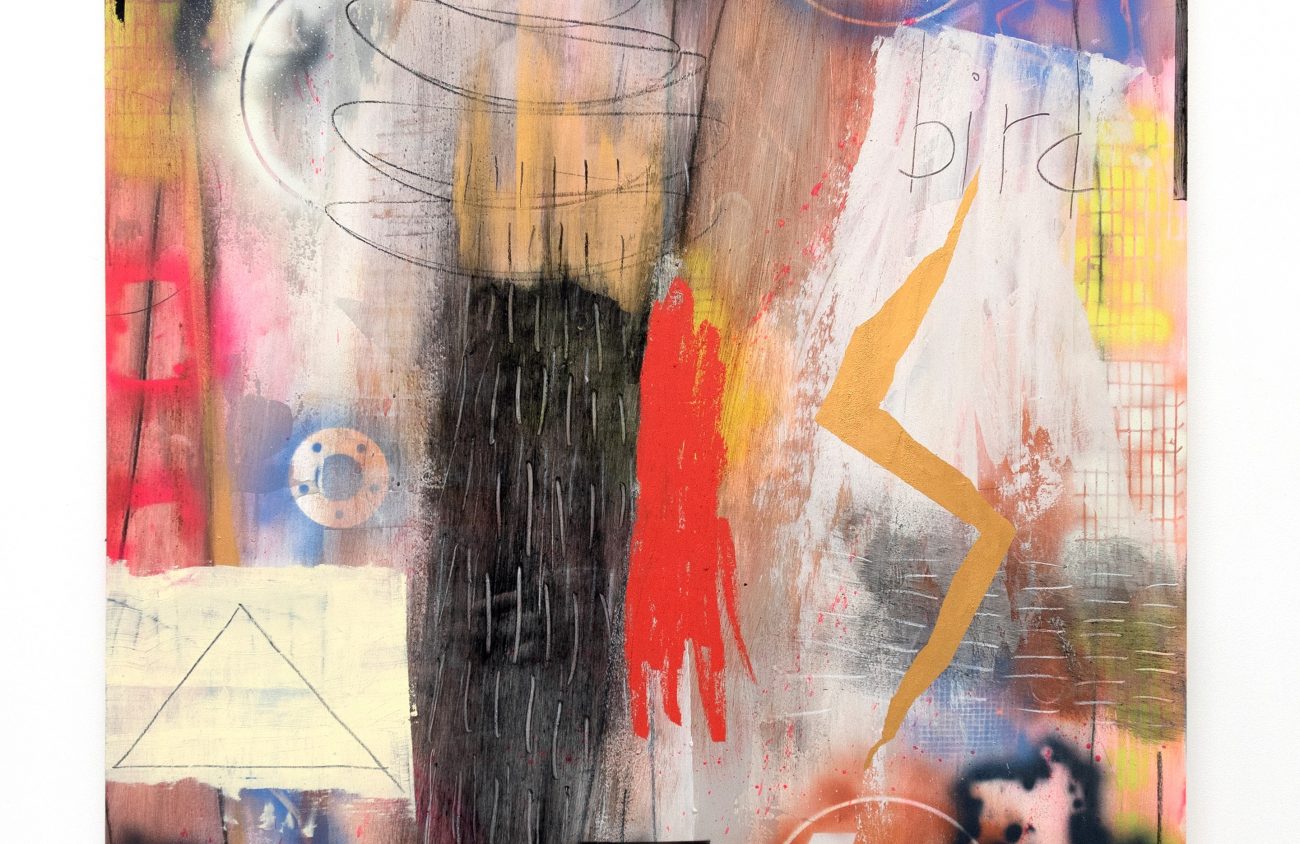Ka’ila Farrell-Smith is an activist and an artist, though not always at the same time. For eight years she canvassed door to door as a climate activist, and during that time she did not make art. A member of the Klamath Modoc tribe, her activism focuses on land and civil rights of Indigenous people. Ghost Rider: Performing Fugitive Indigeneity, curated by her and showing through Aug. 29, features 27 paintings from her Land Back series and a separate exhibit titled Umbo Room, which comprises protest art made by different artists and is meant, she says, to educate.
Farrell-Smith grew up in Springfield not too far from Ditch Projects, the gallery that’s hosting her exhibit. She lived in Portland for 18 years. Then three years ago she retreated to the former Klamath Reservation in Modoc Point, next to Upper Klamath Lake.
She describes it this way: “I’ve removed my labor from the urban center focusing my conceptual practice of performative painting with the land. This performance of refusal and flight is rooted in learning decolonial modes of resistance and freedom from my ancestors and contemporaries.”
When it comes to partisanship, she is not aligned with either the left or the right. She says the Green New Deal is not green. Lithium is central to making electric cars, but it poses a risk to the land of Native people, and for this reason she is against the mining of lithium at Thacker Pass, Nevada.
Thacker Pass is also the site of a 19th century massacre committed against the Paiute people. According to a July 29 Associated Press article, tribal members believe that building a mine where their ancestors were massacred would be equal to building it over Arlington National Cemetery.
Farrell-Smith currently has 27 paintings in Land Back, but her goal is to have 50 in total. Since her art is inspired by her life, she expects future paintings to reference her protest of the mining of lithium and her opposition to the Green New Deal. She recognizes this may not be a popular stance but her first priority, she says, is to help protect land of Indigenous people.
Activist art is a genre of contemporary art, but Farrell-Smith is influenced, in terms of style, by the Dadaists. Their use of collage, incorporating popular images and words into imagery, were techniques that went against the status quo of art making of the day, and the movement is historically associated with the opposition to World War I.
Farrell-Smith says someone once called her an abstract landscape artist. And she’s cool with it if I want to refer to her that way too. I don’t think I would have come up with that description on my own. Her work is more abstract to me than landscape. But I like the label for its emphasis on land, which is so important to her art making, activism and way of life.
Besides addressing land as subject matter in her artworks, she uses it as medium: Painted Hills wild red, Klamath charcoal and white chalk. The white chalk she employs was harvested by her paternal grandmother too, for use as medicine.
“Off the Ground” is an artwork that takes place on the artist’s birthday, which she likes to spend camping in the Modoc National Forest. She says this one day started out sunny and then began to turn. She took down camp as the clouds and thunder rolled in. The bird depicted in the upper right of “Off the Ground” references a thunderbird petroglyph as well as what looked to her like a thunderbird in the clouds that day.
The lightning storm that ensued, she says, resulted in a forest fire.
Given the seriousness of the subject matter, it may surprise you to learn that her approach to making art is to have music going and movement and play. Rather than tackling one artwork at a time, she paints in multiples. Adding layers of gray, colors in the form of aerosol and then stencils, she moves from painting to painting working instinctually. The result is a personal language and space in which all things, abstract and natural, have equal weight.
Ghost Rider: Performing Fugitive Indigeneity runs through Aug. 28 at Ditch Projects Gallery, 303 S. 5th Avenue #165, Springfield. Hours are noon to 4 pm Friday through Sunday and by appointment; for more information see DitchProjects.com.
